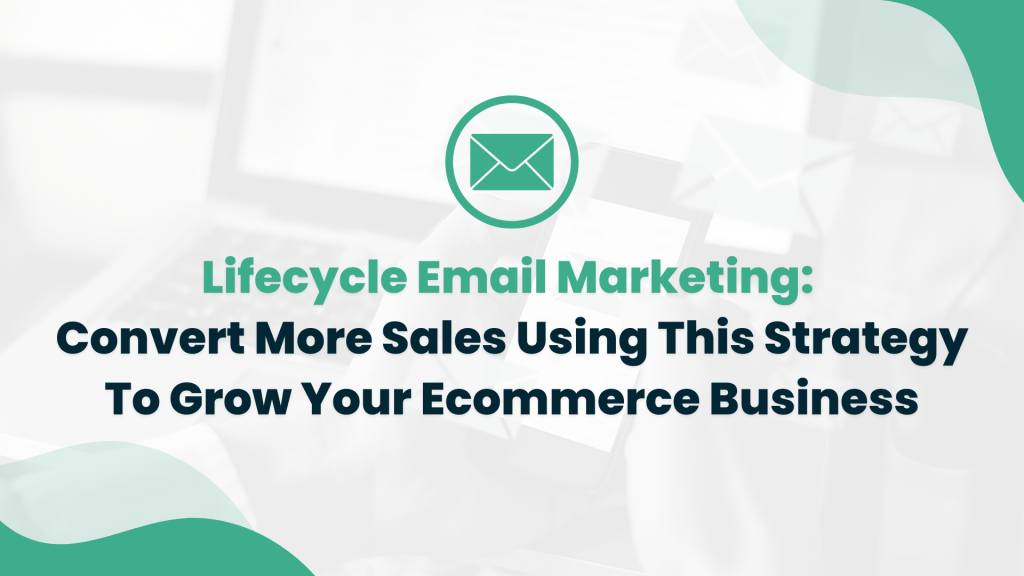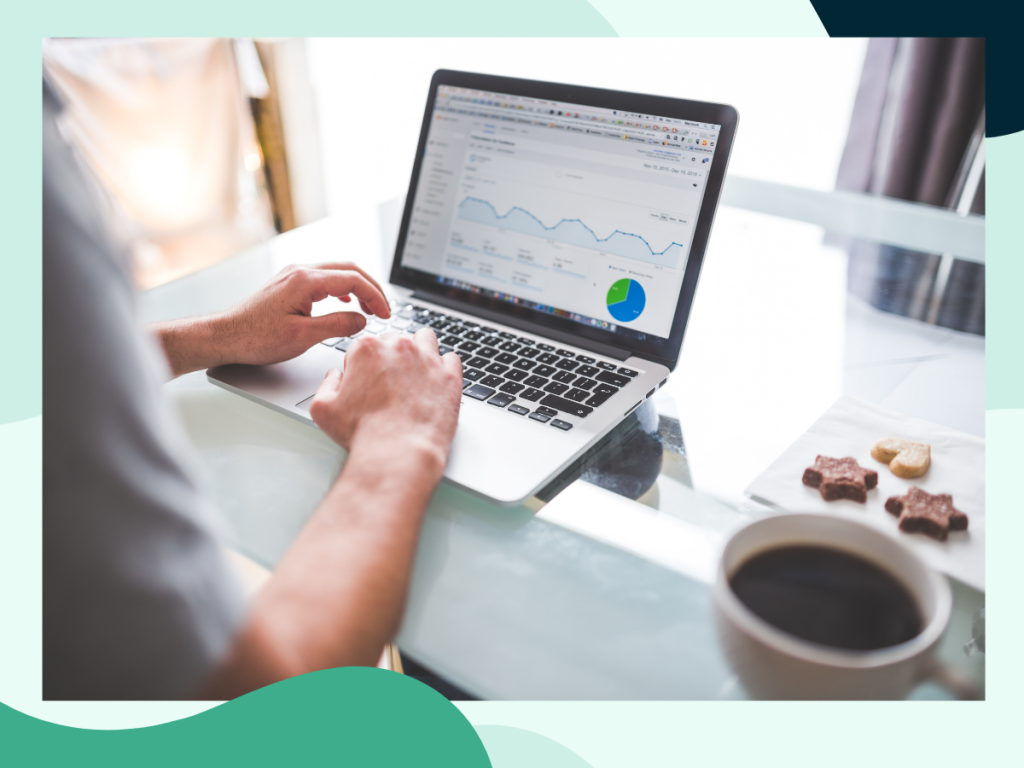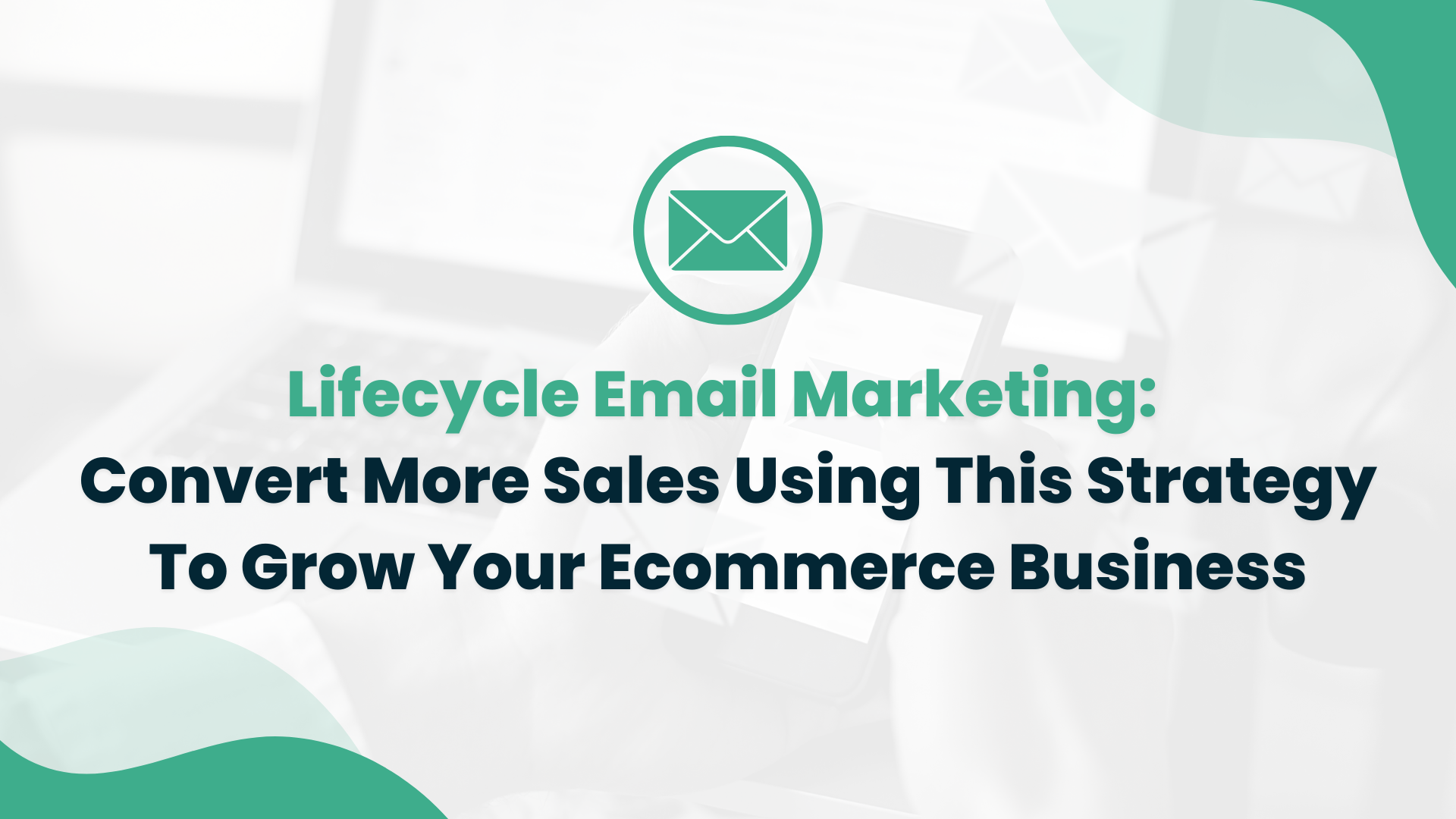
You’ve probably heard that email marketing is one great way to drive massive sales to your online store… And it’s true… But only if you do it right. You see, when it comes to eCommerce businesses, it’s essential that you understand how email marketing works to grow your business revenue. In fact, e-commerce brands should be making at least 30 to 40% of their total revenue from email. But sadly, we’ve seen a ton of e-commerce business owners fail to take advantage of the power of emails fully. As a result? They’re leaving a lot of money on the table! PLUS, they don’t reach their full potential to scale rapidly. The good news is… There’s a way to make email marketing work even better for your eCommerce business… It’s by understanding The Lifecycle of Email Marketing. In this blog post, we will show you precisely what lifecycle email marketing is… And how you can use it to drive more sales for your eCommerce business. We’ll go over the different stages of email marketing concerning online customer journeys. PLUS, you’ll also get some tips about creating successful Lifecycle Email Marketing campaigns. Let’s get started!
What Is Lifecycle Email Marketing
Let me answer this through an analogy. Imagine you’re going on a road trip. You know the route you’re taking, what cities you’ll be spending the night in, and the rest stops between… You also know how long the trip will take. Now, think about your car as your eCommerce business… The road is your customer’s journey, and the cities are your conversion goals. The rest stops are the different stages of your email marketing campaign. And just like a road trip, you also need to plan your journey carefully if you want to reach your destination (make a sale). Lifecycle email marketing is all about using email touchpoints to nurture prospects towards a sale. What that means is… You need to map out the customer journey and create highly strategic emails that will take them from start to finish. It’s a lot like traditional pipeline lead management but focuses on email automation.
Why E-commerce Business Owners Should Understand Lifecycle Email Marketing Campaigns
Why is it so important to use effective lifecycle email marketing campaigns? Well, because it can be a powerful tool for driving sales and growing your business. Think of it as establishing rapport with new customers and re-engaging those who have shown interest in your offer but haven’t bought yet That is so you can keep them engaged even after buying from you. The best way to do this is by providing value at every step of the customer journey. You need to be there for them when they need you the most. A lifecycle email campaign allows you to do just that. It’s a way to nurture your prospects and turn them into loyal customers. That way, you can keep them as paying customers for life.
How To Convert More Sales With Lifecycle Email Marketing
As you know, the more conversion you make, the more money you make! To make it happen, let’s go over some helpful and proven email best practices for creating effective lifecycle emails to grow revenue. The first one you need to do is this:
Understand Customer Journey

I mentioned this a little bit earlier… It is essential to map out the customer journey to create an email strategy that will take them from leads to paying customers. And when we talk about the stages of email marketing, we’re also referring to the different stages customers go through when they interact with your brand online. It’s called Online Customer Journey. There are four main stages of a customer journey in the e-commerce space.
- Awareness
- Engagement
- Conversion Stage
- Retention
The goal is to move your customers from one stage to the other until they’re ready to buy. It is why as e-commerce entrepreneurs, the two of the most important skills you must have to scale your online business are Sales and Marketing. That being said, let’s go over these four stages one by one.
Awareness Stage
The awareness stage is when a potential customer becomes aware of your product or service. It is usually the result of some online marketing campaign, whether it’s through SEO, social media, or paid advertising. The key here is to make sure that you capture their attention and interest. You need to be able to generate leads and get them on your email list. That way, you can start building a relationship with them and slowly move them down your sales funnel.
Engagement Stage
The engagement stage is when prospects start interacting with your brand. They might visit your website, sign up for your newsletter, or download one of your ebook At this stage, it’s necessary to keep them engaged by providing value. Again, you need to keep building relationships with them until they know, like and trust you. When that happens, the selling part will be a walk in the park. One of the best ways to do this is by sending them targeted emails relevant to their interests. This is where segmenting your email list comes in handy. You can segment your list based on their behaviour to send them more targeted messages that will resonate with them.
Conversion Stage
When prospects take the desired action you want them to take, in which most of the time, buy whatever it is you are selling. For eCommerce, the most common conversion mechanism is through a checkout page on the website. You better make sure that you’re providing a smooth and seamless experience for your customers at this stage. It means your website must be optimised for conversion, and your checkout process must be as straightforward as possible. Another way is by signing up for a webinar or scheduling a consultation call. (usually for high-ticket items) Once they’ve made a purchase, it’s vital to continue providing value so they eventually become lifelong customers. You need to deliver on your promises and exceed their expectations. If you’re able to do that, you’ll be able to turn one-time buyers into lifelong customers. Which leads to the last stage, which is…
Retention Stage
The retention stage is when customers become loyal fans of your brand. They’re the ones who will keep coming back for more. PLUS, they will most likely refer your business to their friends and family. So it is really important to keep them engaged by continuing to provide value. You can do this by sending them targeted emails with exclusive deals, discounts, or coupons. Or update them from time to time by sending a newsletter about new products or services that you’re launching. And last but not least, you can send them a personalised thank-you message. It is a simple gesture that can show your customers that you appreciate their business and think about them. Make sure you do good on this stage because it can powerfully take your business to the next level.
Segment Your Email Lists
Now, let’s discuss more about the strategic tactic of email marketing. You see, one of the most crucial aspects you need to learn is knowing how email segmentation works. As part of the Lifecycle of Email Marketing, you need to break your subscribers into different groups based on their interests, needs, or even purchase history. The goal here is to send targeted messages to each group at the right time. It can also be done through Behaviour-Based Email Sequences. It is where you send emails to your subscribers based on their behaviour. For example, if someone visited your website but didn’t make a purchase. Then you can send them a targeted email with a discount or coupon code to encourage them to make a purchase. But if someone did make a purchase, you can send them a follow-up email to thank them for their business and ask for feedback. They’re usually automation-based (or can be easily set up to be) triggered by a specific engagement or response by the customer. Which could lead to higher or increased conversion. Do this right and see for yourself how this can make you a lot of money for your business. You can also segment your list based on their life cycle stage. Let’s say you have a subscriber who’s been on your list for a while but hasn’t made a purchase or hasn’t been opening your emails… What you can do is send them a series of engaging emails. We call it the ‘Re-engagement’ sequence. They are designed to revive your ‘dead’ subscribers. The best part? You can move them further down your sales funnel and eventually convert them into paying customers. On the other hand, if you have a subscriber who just made a purchase, you can strategically send them emails designed to keep them and turn them into lifelong customers. Lastly, you need to…
Measure The Success Of Your Campaigns

I mentioned this a little bit earlier… It is essential to map out the customer journey to create an email strategy that will take them from leads to paying customers. And when we talk about the stages of email marketing, we’re also referring to the different stages customers go through when they interact with your brand online. It’s called Online Customer Journey. There are four main stages of a customer journey in the e-commerce space.
- Awareness
- Engagement
- Conversion Stage
- Retention
The goal is to move your customers from one stage to the other until they’re ready to buy. It is why as e-commerce entrepreneurs, the two of the most important skills you must have to scale your online business are Sales and Marketing. That being said, let’s go over these four stages one by one.
Awareness Stage
The awareness stage is when a potential customer becomes aware of your product or service. It is usually the result of some online marketing campaign, whether it’s through SEO, social media, or paid advertising. The key here is to make sure that you capture their attention and interest. You need to be able to generate leads and get them on your email list. That way, you can start building a relationship with them and slowly move them down your sales funnel.
Engagement Stage
The engagement stage is when prospects start interacting with your brand. They might visit your website, sign up for your newsletter, or download one of your ebook At this stage, it’s necessary to keep them engaged by providing value. Again, you need to keep building relationships with them until they know, like and trust you. When that happens, the selling part will be a walk in the park. One of the best ways to do this is by sending them targeted emails relevant to their interests. This is where segmenting your email list comes in handy. You can segment your list based on their behaviour to send them more targeted messages that will resonate with them.
Conversion Stage
When prospects take the desired action you want them to take, in which most of the time, buy whatever it is you are selling. For eCommerce, the most common conversion mechanism is through a checkout page on the website. You better make sure that you’re providing a smooth and seamless experience for your customers at this stage. It means your website must be optimised for conversion, and your checkout process must be as straightforward as possible. Another way is by signing up for a webinar or scheduling a consultation call. (usually for high-ticket items) Once they’ve made a purchase, it’s vital to continue providing value so they eventually become lifelong customers. You need to deliver on your promises and exceed their expectations. If you’re able to do that, you’ll be able to turn one-time buyers into lifelong customers. Which leads to the last stage, which is…
Retention Stage
The retention stage is when customers become loyal fans of your brand. They’re the ones who will keep coming back for more. PLUS, they will most likely refer your business to their friends and family. So it is really important to keep them engaged by continuing to provide value. You can do this by sending them targeted emails with exclusive deals, discounts, or coupons. Or update them from time to time by sending a newsletter about new products or services that you’re launching. And last but not least, you can send them a personalised thank-you message. It is a simple gesture that can show your customers that you appreciate their business and think about them. Make sure you do good on this stage because it can powerfully take your business to the next level.
Segment Your Email Lists
Now, let’s discuss more about the strategic tactic of email marketing. You see, one of the most crucial aspects you need to learn is knowing how email segmentation works. As part of the Lifecycle of Email Marketing, you need to break your subscribers into different groups based on their interests, needs, or even purchase history. The goal here is to send targeted messages to each group at the right time. It can also be done through Behaviour-Based Email Sequences. It is where you send emails to your subscribers based on their behaviour. For example, if someone visited your website but didn’t make a purchase. Then you can send them a targeted email with a discount or coupon code to encourage them to make a purchase. But if someone did make a purchase, you can send them a follow-up email to thank them for their business and ask for feedback. They’re usually automation-based (or can be easily set up to be) triggered by a specific engagement or response by the customer. Which could lead to higher or increased conversion. Do this right and see for yourself how this can make you a lot of money for your business. You can also segment your list based on their life cycle stage. Let’s say you have a subscriber who’s been on your list for a while but hasn’t made a purchase or hasn’t been opening your emails… What you can do is send them a series of engaging emails. We call it the ‘Re-engagement’ sequence. They are designed to revive your ‘dead’ subscribers. The best part? You can move them further down your sales funnel and eventually convert them into paying customers. On the other hand, if you have a subscriber who just made a purchase, you can strategically send them emails designed to keep them and turn them into lifelong customers. Lastly, you need to…


